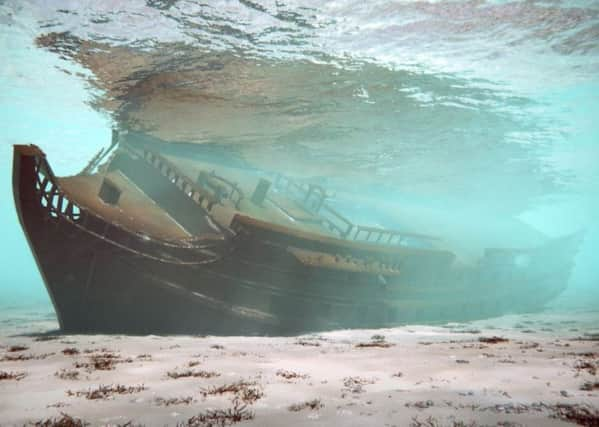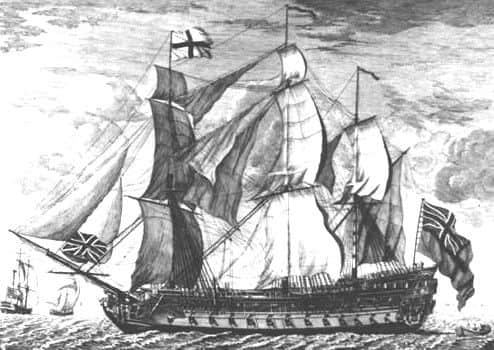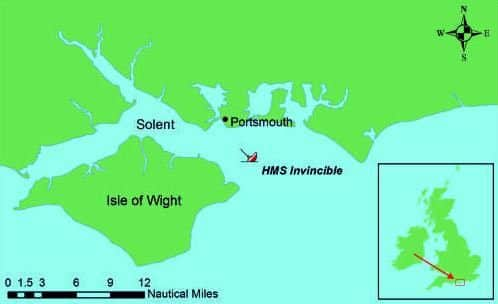EXPLORE: Take a 3D tour of the wreck of HMS Invincible in the Solent


The virtual tour, commissioned by Historic England, has been devised by Pascoe Archaeology and gives a fascinating insight into the resting place of HMS Invincible.
She met her fate early on February 19, 1758, as she sailed from Portsmouth with a fleet headed across the Atlantic to fight the French off what is now Nova Scotia.
_________________________


_________________________
Advertisement
Hide AdAdvertisement
Hide AdThe 74-gun ship - ironically having become a Royal Navy ship after being seized from the French - got no further than the Horse and Dean Sand off Portsmouth and to the east of the Isle of Wight, where she ran aground and foundered.
The remains of the mighty warship were discovered in 1979 when two Portsmouth fishermen snagged their nets on underwater timbers and since then there has been a huge maritime archaeological programme at the site of what is considered one of Britain’s most significant wrecks.


Invincible archaeologist Daniel Pascoe, who created the 3D tour, said: ‘It enables the diving and non-diving community to experience what it is like to explore a historic shipwreck.
‘The launch of the virtual dive tour today marks the anniversary of the discovery of the wreck and 37 years on, there is still much to explore and knowledge to be gained from the Invincible wreck site.
Advertisement
Hide AdAdvertisement
Hide Ad‘The 3D virtual tour has been created with ArtasMedia and CyanSub by using a variety of archaeological records spanning 37 years including 2D plans, photographs, HD video and the latest 3D photogrammetric surveys.
‘It also tells the story of the ship, her discovery and investigations by past licensee, Commander John Bingeman and his team, and current work by myself as the licensee.


‘The virtual trail is an excellent platform to share the experience of exploring a shipwreck with those who don’t dive and a fantastic way of increasing public awareness of the wreck and maritime archaeology as a whole.’
Alison James, maritime archaeologist for Historic England said: ‘The virtual dive trail for the Invincible allows non-divers to find out much more about this fascinating wreck site.’
Advertisement
Hide AdAdvertisement
Hide AdHMS Invincible - the first Royal Navy ship to bear the famous name - was a revolutionary warship conceived by the French and launched in 1744
After her capture three years later she greatly influenced future British warship design.


Mr Pascoe’s website tells how she met here fate: ‘Guns were jettisoned to lighten the ship and anchors rowed out off the stern in an attempt to pull the Invincible off the sands, but all to no avail.
‘She was stuck fast with water rapidly filling the ship. The crew worked tirelessly for three days manning the pumps to save the ship but it was hopeless.
Advertisement
Hide AdAdvertisement
Hide Ad‘The Captain, Bentley, realised the Invincible was lost. Guns, rigging and as much of the stores as possible were rescued but she eventually succumbed, rolling onto her beam ends, her port side sinking into the sand.
‘Her upper decks remained above water for a number of months but the constant battering from the waves and tide eventually caused the ship to break up and sink out of sight.’
_________________________
_________________________
The wreck was discovered on May 5, 1979 by fishermen Arthur Mack and Melvin Goften.
The team led by John Bingeman established that Invincible’s port side had survived, preserved from bow to stern from the main gundeck down to the floor of the ship.
Advertisement
Hide AdAdvertisement
Hide AdThey also found several sections of the broken starboard side structure, which was scattered to the north, with the potential for much more to be buried.
Hundreds of artefacts were recovered associated with all aspects of shipboard life and technologies providing a unique insight into life on board a mid-18th Century warship.
Many of these artefacts are on display at the Command of the Oceans exhibition at Chatham Historic Dockyard.